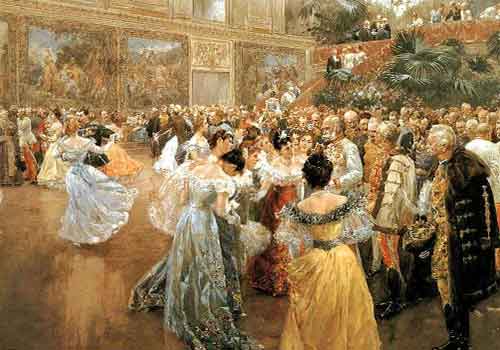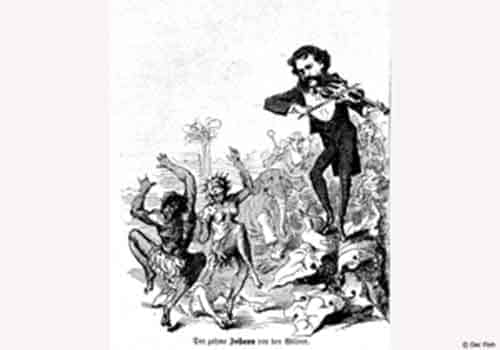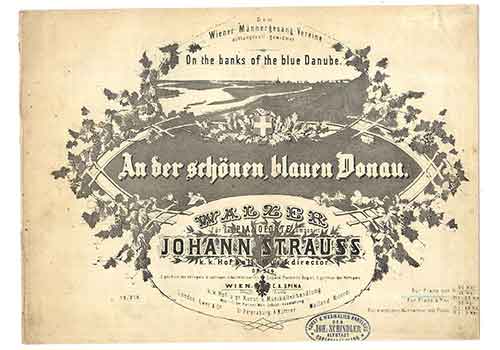This website uses cookies
We use cookies to personalize content and ads, to provide social media features, and to analyze traffic on our website. In addition, we use tracking tools such as Matomo and/or Google Analytics to collect anonymous usage data. You can block tracking on our Privacy Policy page. We also share information about your use of our website with our social media, advertising, and analytics partners. Our partners may combine this information with other data that you have provided or that has been collected as part of your use of the Services. For more information on how Google processes your data, please visit the Google Business Data Responsibility page.
Data Protection
This website uses cookies to offer you the best possible user experience. Cookie information is stored in your browser and enables functions such as recognizing you when you return, and helps our team understand which sections of the website you find most interesting and useful.
Strictly Necessary Cookies
Strictly necessary cookies should always be enabled to save your cookie settings.
Marketing & Statistics
This website employs tracking tools such as Matomo and/or Google Analytics to collect anonymous data, for example, regarding the number of visitors and the most popular pages. Enabling these cookies helps us to continuously improve the website.
Google Tag Manager
This is a tag management system. Using the Google Tag Manager, tags can be centrally integrated via a user interface. Tags are small pieces of code that track activities. Script codes from other tools are integrated via the Google Tag Manager. The Tag Manager allows controlling when a specific tag is triggered.
- +43 1 585 04 55
- office@amazing-sisi.at
- Daily from 9:30 to 19:00
VR Music Ride
Experience at Time Travel a Virtual Reality Ride about the “Vienna – the city of music”. mmerse yourself in Viennese music history with VR glasses. According to the latest market trends of virtual reality, a 360 ° space experience awaits you. Join us on a journey of classical music, accompanied by waltzing couples, typical Viennese Heurigen music an d mordern pop music. Meet the great music geniuses Mozart, Beethoven and “Rock me Amadeus” – Falco live.
The Viennese Waltz
The Viennese waltz was considered wicked in earlier times. In September 2017, the Viennese waltz has been declared an intangible cultural heritage by the UNESCO. The Viennese waltz has a long tradition and is an important part of the approximately 450 Viennese balls. He makes a long ball night really complete.
The Vienna Opera Ball is traditionally opened with a left-sided waltz. Turning in three-quarter time, left or right, is something typically “Viennese” and is nowhere as celebrated as in Vienna. Even at weddings and festive occasions it is common to start with a waltz.
How to dance the Viennese waltz?
The Viennese waltz is derived from the word rolling, which means turning and grinding. It was created in the last quarter of the 18th century in the Bavarian-Austrian area. It is a dance in three-four time for single couples and as a preform we can refer to the “Ländlerisches Dancing”. The dance pair jumps and turns constantly.
It is a social and tournament dance in three quarter time, which is danced at a rate of 58-60 cycles per minute. In comparison, there is also the Slow Waltz (English Waltz). The Viennese waltz (formerly known as the French waltz) was first mentioned in early 1770s in Old Viennese folk comedies and became known even before the French Revolution. He supplanted the aristocratic minuet as relevant ballroom dance.
At first, the waltz was sometimes heavily criticized because it was considered immoral, too fast and too tight because of the movements. In particular, theleft-sided waltz, was initially frowned upon for indecency in the Viennese high society, especially because of theintimate touch of the couple.
This also had to do with the fact that the ladies suddenly showed their ankles while dancing. The ladies were also laced quite tightly and some even fainted ue to the fast rotational movements.
The Congress of Vienna the Biedermeier Era
In 1814/15 the Viennese waltz was often danced during the Congress of Viennaand turned into to a social event in Vienna. After the Napoleonic wars, Europe was restored to its former structures and negotiations were held in Vienna. Besides of the negotiations a lot of waltzing events took place. Not for Nothing, the famous saying “The Congress dances, but it does not move on”, arose.
During the Biedermeier period, Vienna definitely became the capital of waltz music in Europe. The Viennese waltz gained acceptance and popularity.
Johann Strauss, the elder founded the Strauss dynasty and composed mainly waltzes. However, he is better known for his march music, such as the well-known Radetzky March, a tribute to General Radetzky. Joseph Lanner, together with Johann Strauss, the elder , is regarded as the founder of the Viennese waltz.
Later, the waltz isbrought to its highest perfection by the Strauss sons Johann, Josef and Eduard. Through concert tours he is carried to America. Johann Strauss Sohn (1825-1899) went down in history as the “Waltz King”. His tours took him to Russia and even to America.
His most famous work is the Danube Waltz, which was premiered in February 1867 in today’s Dianabad. The nine-minute original Version of the Danube waltz must not be missed in any New Year’s Eve. In Vienna People dance traditionally to the sounds of the Danube waltz into the New Year The danube waltz is also on the program at the New Year’s Concert and is considered the unofficial anthem of Austria.


The Viennese ball culture
Towards the end of the 19th century, the waltz was always in the center of Viennese operetta. he technique of the waltz has it’s origin from the ballet technique. It has developed from the very fast rotary motion to today’s rather floating dance form.
The classic Viennese waltz is still danced with left-sided rotation and is considered the “most Viennese” of all dances. The Viennese Waltz is danced as one of the five standard dances worldwide on standard tournaments. He also occupies a special position on balls and masked balls. The waltz can definitely be described as a dance sport, because it is quite exhausting.
Since 2010, “Viennese Ball Culture” has been an intangible cultural heritage in Austria. The origingoes back to the monarchy, where a certain court etiquette was observed. In addition to certain clothing regulations, these include theopening, the ladies’ giveaway and themidnightsurprise, as well as the ball finish. This tradition has not only been preserved in Austria, but also decisively shaped the style of other balls in Europe.
Special balls in Vienna are for example, the “Zuckerbäckerball” (ball of the confectioners) , the “Philharmonic ball” or the “Kaffeesiederball” (ball of the traditional coffeemakers), just to name a few. The ball season culminates with the Vienna Opera Ball, which traditionally takes place on the last thursday before Ash Wednesday. ith the Opera Ball, the ball season in Vienna comes to an end, until the following year, when it will be announced again “Alles Walzer”.


After his father died suddenly of scarlet fever in 1849 at the age of only 45, the son was able to take over his father’s orchestra. It was not until 1852 that Johann Strauss Sohn was entrusted with the performance of music at the imperial court. Later thetitle of k.k.Hofballmusik-Direktor followed.
The operetta “Fledermaus” and the “Gypsy Baron” created further hype. He was showered with invitations and honors as the Waltz King. During the day he composed countless waltzes and operettas, and in the evening he played late into the night. He became famous worldwide for the Donau Waltz, which is considered the secret anthem of Austria.
Strauss’ enormous workload took its toll: physical breakdowns necessitated a series of spa staysin 1853-55. He was inspired in Badgastein and then spent a few seasons as a guest in Pavlosk near St. Petersburg, where he also won over the Russian tsar’s family. It was the performances in Pavlovsk thatfinally made Strauss’s son step out of his father’s shadow in Vienna.
In 1862 he married Henriette, a former singer seven years his senior, called Jetty, who also became his manager. After she died in 1878, he married the actress and singer Ernestine Dittrich, called Lili, who was 25 years younger. However, it soon came to divorce because of another man. He consoled himself with Adele Strauss, who was 31 years younger. In order to marry her, he converted from Catholicism to Protestantism and even left the Austrian state and became a citizen of Saxe-Coburg and Gotha.

In 1862 he married Henriette, a former singer seven years his senior, called Jetty, who also became his manager. After she died in 1878, he married the actress and singer Ernestine Dittrich, called Lili, who was 25 years younger. However, it soon came to divorce because of another man. He consoled himself with Adele Strauss, who was 31 years younger. In order to marry her, he converted from Catholicism to Protestantism and even left the Austrian state and became a citizen of Saxe-Coburg and Gotha.
In 1872 he embarked on his longest concert tour, which took him across the Atlantic to the “World Peace Festival” in Boston and on to New York. However, he quickly suffered from homesickness and was glad to be able to make a guest appearance in Vienna again.
On June 3, 1899, he died at the age of 74 as a result of pneumonia. He was married three times and left no children.
His monument in the City Parkis one of the most photographed in Vienna and we can visit his honorary grave at the Central Cemetery. Furthermore, his former residence on Praterstraße, where he composed the famous Danube Waltz, can be visited. In addition, there is an interesting museum about the Strauss dynasty in the 9th district.
Air raid shelter
Opening hours
Daily from 10:00 – 20:00
Tour starts every 20 – 30 minutes
We ask you 15 minutes before
Tour start to arrive
Duration: about 30 minutes
Last admission: at 7:30 p.m.
Directions Parking
Habsburgergasse 3/8
1010 Vienna
When digging
Payment options

A partner company of the
Vienna City Card

© Copyright 2025 Amazing Sisi. | Imprint | Privacy Policy
